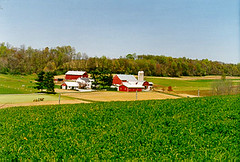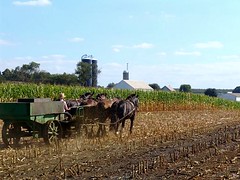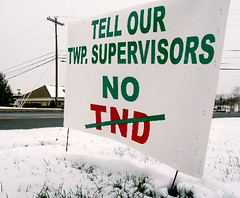First bathwater, then baby: NIMBYs win in Lancaster, but to what end?

Posted January 30, 2008 at 10:01PM

 Lancaster County, Pennsylvania, has a wonderful character that is well worth preserving. The heart of Pennsylvania Dutch Country, Lancaster's most memorable landscape features are small Amish farms on beautiful rolling hills. It’s also the most productive farmland in the Commonwealth. History, culture, rolling vistas, productive agriculture, it’s all there.
Lancaster County, Pennsylvania, has a wonderful character that is well worth preserving. The heart of Pennsylvania Dutch Country, Lancaster's most memorable landscape features are small Amish farms on beautiful rolling hills. It’s also the most productive farmland in the Commonwealth. History, culture, rolling vistas, productive agriculture, it’s all there.
The problem is that large-lot, automobile-oriented sprawl is threatening to overrun the county’s farmland, arguably its greatest asset. And, apparently, that is just fine with the good citizens of East Hempfield Township, who have just forced their supervisors to rescind a “Traditional Neighborhood Development” ordinance  that would have replaced sprawl in the future with more compact, walkable, development that makes much more efficient use of land. They also forced the tabling of approval for a proposed TND called Independence that would have placed 3000 homes on roughly 300 walkable acres, rather than the 1500 acres that would be required to accommodate them under prevailing patterns of new development.
that would have replaced sprawl in the future with more compact, walkable, development that makes much more efficient use of land. They also forced the tabling of approval for a proposed TND called Independence that would have placed 3000 homes on roughly 300 walkable acres, rather than the 1500 acres that would be required to accommodate them under prevailing patterns of new development.
Look, I can’t say whether Independence was the right development in the right place or not. I didn’t see the plans or study the context. It clearly would have saved a lot of land, and generally speaking I like TNDs. But, in the wrong place, it could well be a disaster that would exacerbate rather than displace sprawl. What I can say, though, is that tossing the TND ordinance that enables compact development is not the right answer and, in fact, effectively guarantees sprawl. What I can also tell, based on the article in which the story is reported, is that the debate is not taking place on the right issues. As one resident apparently put it with regard to walkability, “you're going to pry my car from my cold, dead fingers."
 What I suspect from a distance is that the right kind of groundwork hasn’t been laid in Lancaster for TND and developments like the apparently ill-fated Independence. As long as we keep presenting new development one increment at a time, of course we’re only going to find suspicion and resistance. But when citizens are encouraged to think ahead, and wrestle with projected growth information, along with good information about where the best farmland is and where the best growth infrastructure is, people almost always come to the right conclusions about where and how to develop, and what should be preserved. If they have participated in the planning, they understand that there are places and kinds of development to say yes to, and they can better accept the development when it does come.
What I suspect from a distance is that the right kind of groundwork hasn’t been laid in Lancaster for TND and developments like the apparently ill-fated Independence. As long as we keep presenting new development one increment at a time, of course we’re only going to find suspicion and resistance. But when citizens are encouraged to think ahead, and wrestle with projected growth information, along with good information about where the best farmland is and where the best growth infrastructure is, people almost always come to the right conclusions about where and how to develop, and what should be preserved. If they have participated in the planning, they understand that there are places and kinds of development to say yes to, and they can better accept the development when it does come.
They really need to do this. My fear is that, by trying to save their community’s character, many well-intentioned citizens in Lancaster and elsewhere may in fact be hastening its demise by staying with business-as-usual sprawl.
By contrast, the right kind of groundwork was laid in Ontario, as I previously posted, leading to their excellent Places to Grow plan. And it’s also the sort of citizen-based collaboration that takes place with the aid of one of my favorite planning tools, “Reality Check,” a mapping and visioning exercise being sponsored in locations around the county by the Urban Land Institute. That will be the subject of a future post. In the meantime, enjoy Lancaster while you can.